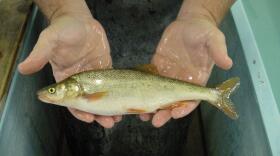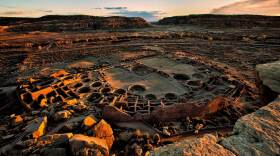The “yuk factor” is definitely there: owls regurgitate little packets of undigested bones, fur, and feathers left over from animals they ate a few hours earlier.
But the resulting owl pellets, and their contents, can last a long time in the dry Southwest. And a closer look at them sheds light on various kinds of environmental change.
In 5-million-year-old rock in Arizona’s Verde Valley, paleontologists found a miniature fossilized bone bed with the remains of small mammals and birds. The bones mostly belonged to nocturnal rodents. That, and their condition, strongly point to consumption by a medium-sized owl.
In a much younger deposit on the northern edge of the Colorado Plateau, actual owl pellets have accumulated in a dry cave over the last 13,000 years. Studying the bones encased in the fossilized pellets, researchers think small mammals were able to adapt to natural warming at the end of the ice age.
But during the 20th century, the pellets show a big ecological shift driven by an invading plant called cheatgrass. As cheatgrass has taken over a sizable section of the Southwest, shrub habitat is closing in, and its drier seeds are harder for small mammals to eat. The bones in the pellets reveal that the mammals’ overall body size is decreasing.
So owl pellets are time capsules. Their contents enlighten us about changes in climate and ecosystems, both from natural and human causes, and from millions of years ago to the present day.







